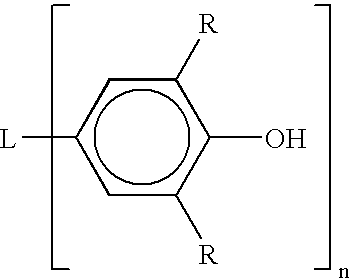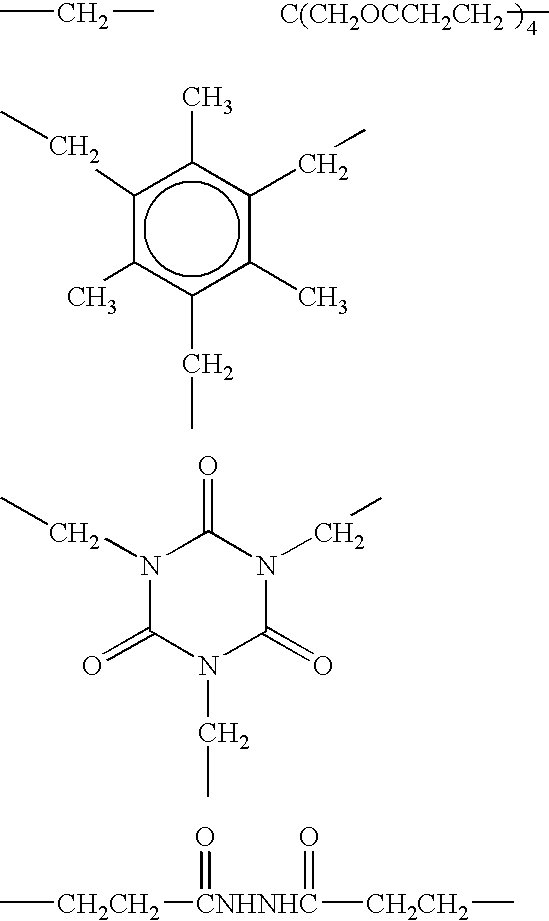Flame retardant insulation composition having improved scorch resistance
a technology of flame retardant and composition, applied in the field of composition, can solve the problems of high activity peroxide scorching, undesirable scorching, and association with use, and achieve the effects of improving scorching resistance, flame retardant polymeric composition, and good processing characteristics
- Summary
- Abstract
- Description
- Claims
- Application Information
AI Technical Summary
Benefits of technology
Problems solved by technology
Method used
Image
Examples
example 1
[0044]A flame retardant crosslinkable composition of the invention having the following weight percentages of ingredients and suitable for wire insulation was prepared by melt blending
[0045]44.3% ethylene-vinyl acetate copolymer (18% VA; MFR 2.2 g / 10 min)
[0046]53.2% ATH
[0047]0.65% hindered phenol stabilizer (IRGANOX 1010)
[0048]0.33% thioester stabilizer (SEENOX 4125)
[0049]0.11% lauric acid
[0050]0.33% ethylene-bis-stearamide
[0051]0.53% VTMOS
[0052]0.56% α,α′-BTDB
[0053]0.2% DMP
[0054]The above composition, when evaluated for cure using the ODR, had a cure rate (t70) of 4.64 minutes and scorch time (t10) of 4.28 minutes. Tmax was 80 lbs / in. The cure efficiency was calculated to be 62.
example 2
[0060]Example 1 was repeated except that a multifunctional crosslinking coagent was included in the composition. 0.2 Wt. % triallyl cyanurate (TAC) was incorporated in the formulation of Example 1. The composition had a cure rate (t70) of 3.36 minutes and scorch time (t10) of 3.50 minutes. The cure efficiency was 67.
example 3
[0061]Example 2 was repeated except that the amount of TAC was increased to 0.5 wt. %. The cure rate (t70) was increased to 2.53 minutes; however, the scorch time was still a very manageable 3.29 minutes. The cure efficiency was increased to 84.
PUM
| Property | Measurement | Unit |
|---|---|---|
| melt index | aaaaa | aaaaa |
| melt index | aaaaa | aaaaa |
| wt. % | aaaaa | aaaaa |
Abstract
Description
Claims
Application Information
 Login to View More
Login to View More - R&D
- Intellectual Property
- Life Sciences
- Materials
- Tech Scout
- Unparalleled Data Quality
- Higher Quality Content
- 60% Fewer Hallucinations
Browse by: Latest US Patents, China's latest patents, Technical Efficacy Thesaurus, Application Domain, Technology Topic, Popular Technical Reports.
© 2025 PatSnap. All rights reserved.Legal|Privacy policy|Modern Slavery Act Transparency Statement|Sitemap|About US| Contact US: help@patsnap.com



